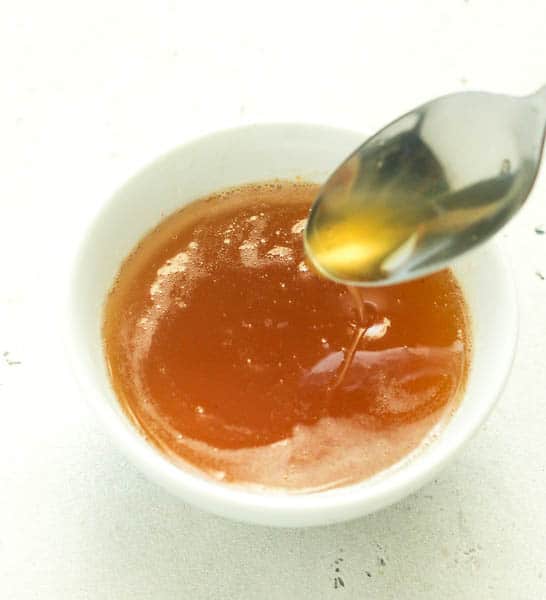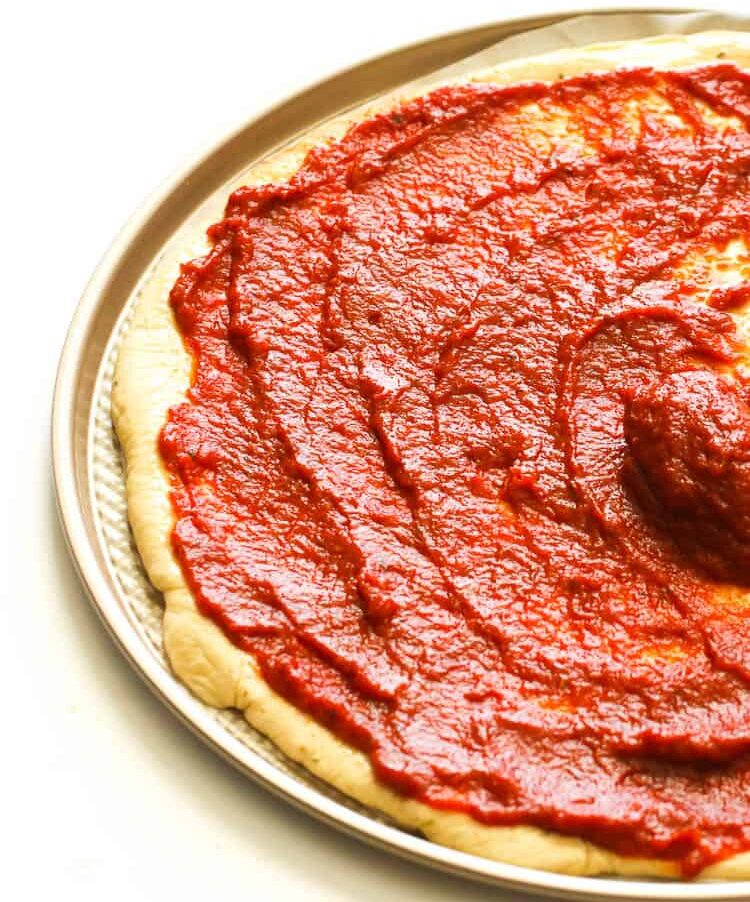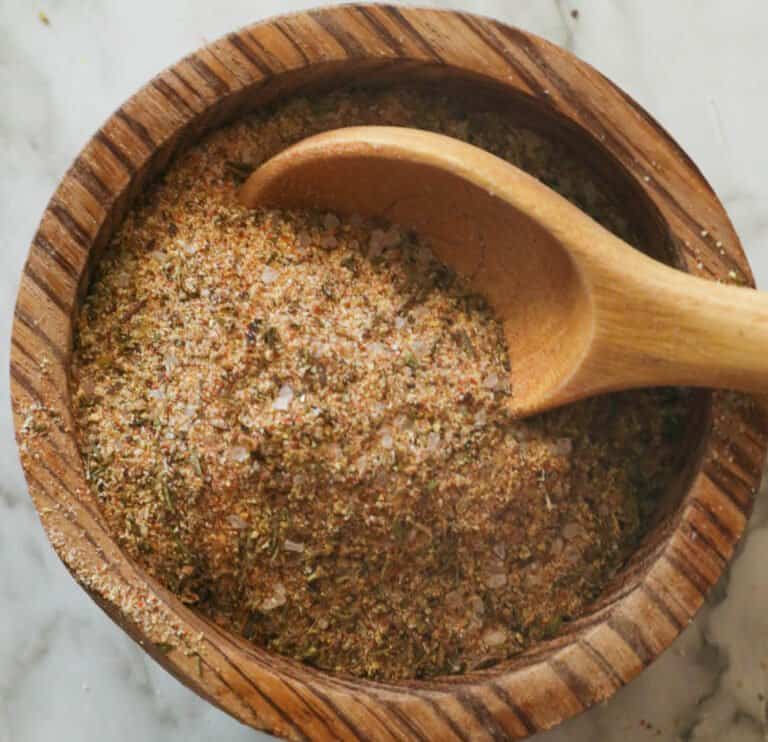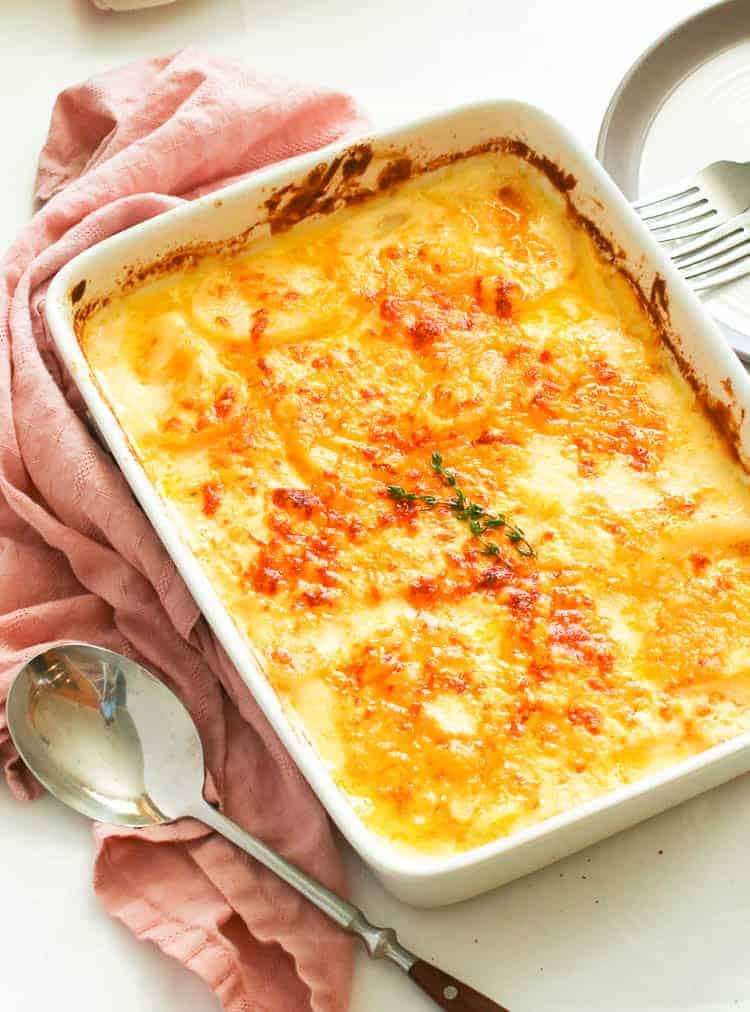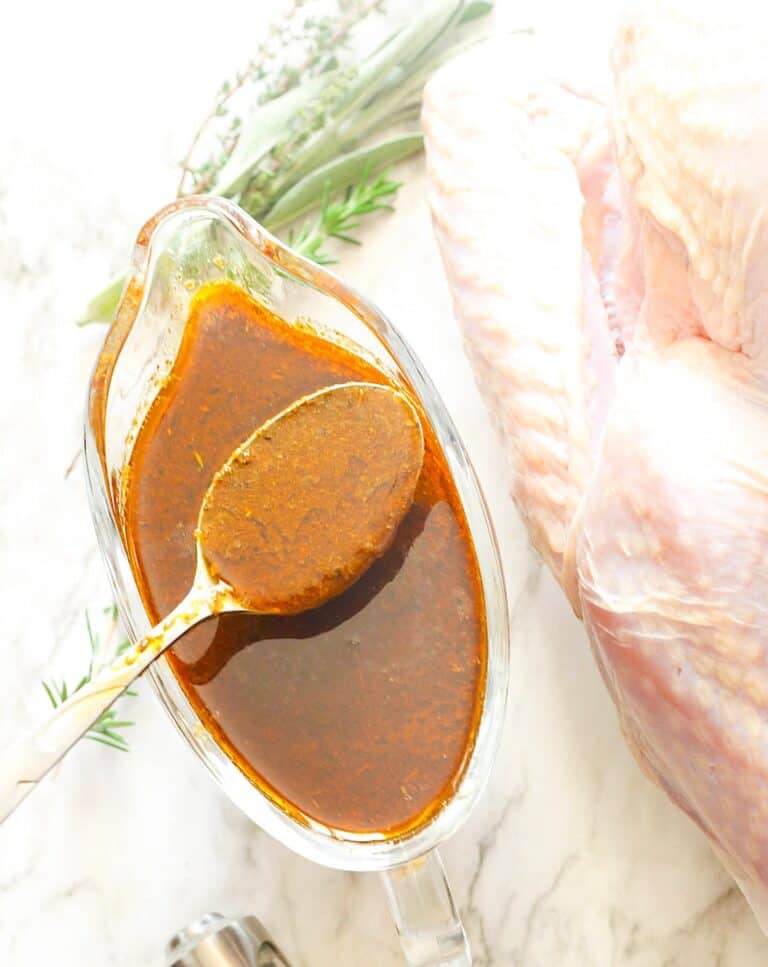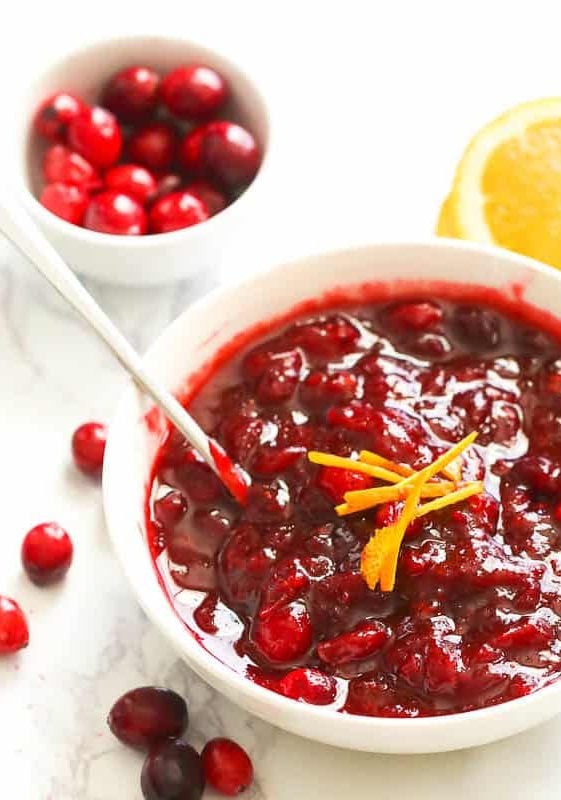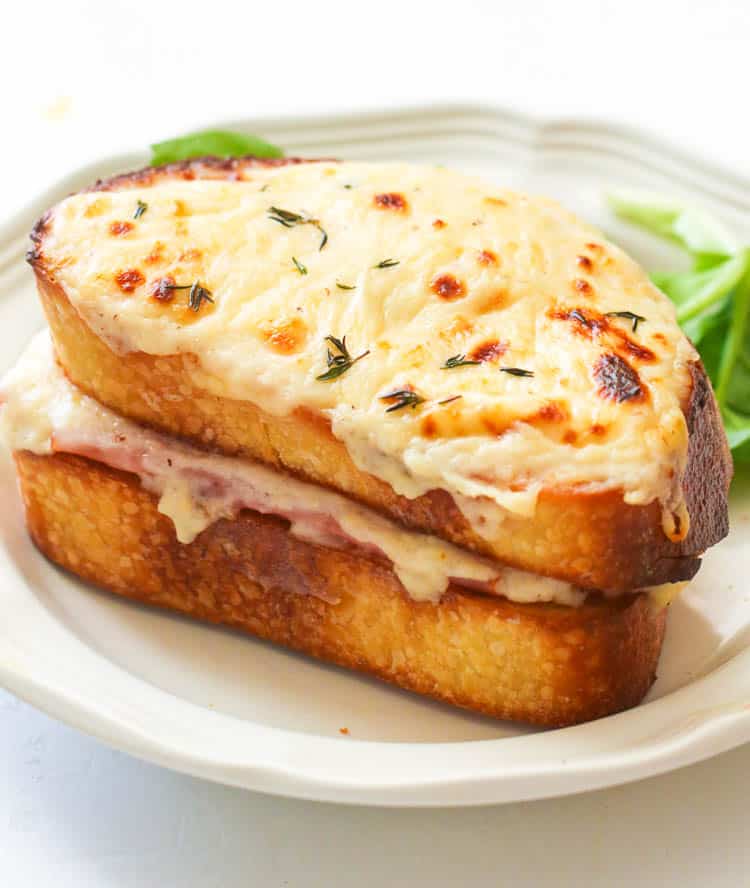How to Brown Butter
How to brown butter – Butter makes everything better, right? So crank up butter’s awesomeness by browning it to a gorgeous golden. That toasty, nutty flavor adds another layer to sauces, frostings, and cakes. You’ll be amazed by how a simple ingredient upgrade brings rich flavors to any dish!
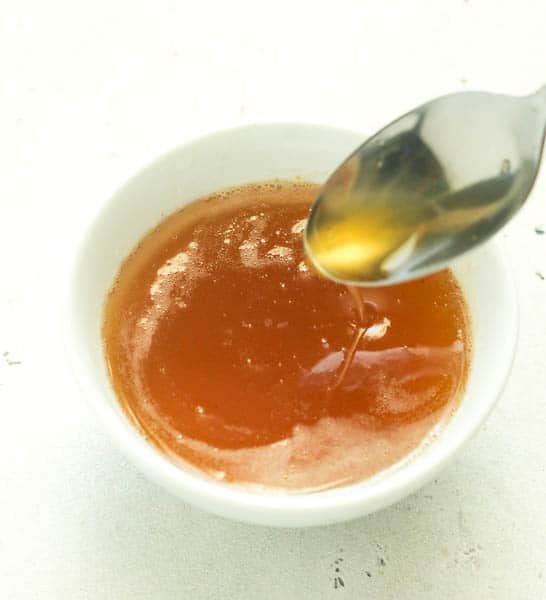
How many recipes ask for clarified butter or ghee? No need to panic because it’s as easy as melting butter. Beurre noisette (brown butter in French) follows the basic step-by-step process, adding another ingredient to your repertoire.
Content…Why It Works |
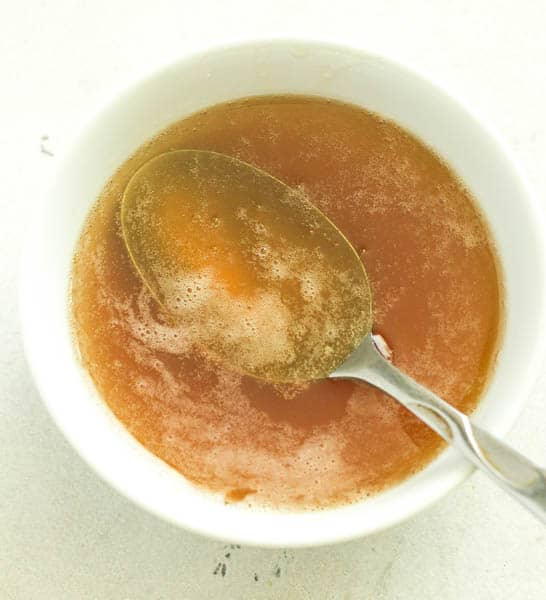
Why Browning Butter Works
If you’ve ever tried Indian ghee, you know cooking butter can do amazing things. The milk solids have sugar, which browns quite quickly. In ghee and clarified butter, you strain them out for a lactose-free fat that still tastes like butter.
For brown butter, you leave that goodness in the butter for extra flavor. The brown bits from the milk solids add a nutty flavor that goes great in both sweet and savory dishes. The simple
How to Make Brown Butter
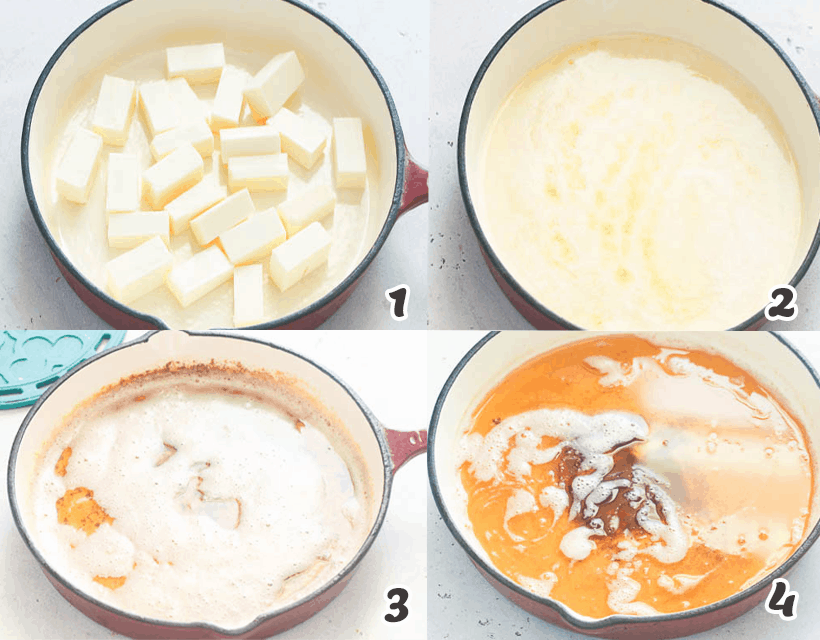
- Prep – Cut the butter into tablespoon-sized pieces.
- Cook the butter in a light-colored saucepan over medium-low heat. Continue stirring the melted butter, scraping the bottom of the pan. It will begin foaming and sizzling around the edges.
- Brown – Let the butter continue cooking for 4-8 minutes until it turns brown and the foam subsides. Check to make sure the milk solids at the bottom have toasted.
- Cool – For clear brown butter, strain it into a heat-proof bowl through a colander lined with cheesecloth. To keep those delicious browned bits in your butter, skip the straining. Use warm in a recipe or let cool and solidify.
Recipe Notes & Tips
- A light-colored pan (stainless steel works fine) gives you a better view of the butter. That way, you can see when it has browned to the right level.
- To strain or not. Both have advantages. I love the rustic look and toasty milk flavor of those browned bits in a frosting. But if you’re after a smoother, more elegant effect, feel free to strain it.
- Unsalted vs. salted butter. While I prefer unsalted butter for this recipe, salted butter will brown just fine. If you’re stuck using salted butter, fear not. Reduce the salt in the recipe you’re using it in, and you’re good to go.
- Watch it. Please don’t turn your back on your butter because it can go from brown to burnt in seconds. Milk solids brown quickly.
- Vegan replacement. The milk protein in butter is what browns for that nutty flavor. However, toasting pecans in vegan butter can get you pretty close to the flavor profile. Also, a friend told me that Violife butter browns beautifully.
- Evaporation. During the cooking process, the liquid evaporates. The final brown butter will be 2-3 tablespoons less than the one cup of butter you started with.
How to Store It
You can keep brown butter the same way as regular butter. If not using it immediately, I pour it into a glass jar and cover it with a lid. It lasts at room temperature for 3 weeks, in the fridge for months, and in the freezer for up to a year.
Ways to Use Brown Butter
The magical taste brought by browned butter has so many uses.
- Frosting. Replace regular butter with brown butter in your favorite frosting recipe.
- Popcorn. Pour it over popcorn with a shake of your chosen popcorn seasoning.
- Savory. Saute vegetables and greens in brown butter, add it to gravy, drizzle it over roasted vegetables, or use it to baste your steak.
- Baked goods. Replace half the butter with browned butter in your pound cake, banana bread, or other sweet treat.
More Amazing Recipes to Use Browned Butter
Watch How to Make It
[adthrive-in-post-video-player video-id=”VGbpOOSg” upload-date=”2021-02-05T08:00:00.000Z” name=”How to Brown Butter” description=”Browning your regular butter is an ultimate cooking skill booster. This brown butter sauce adds a nutty and toasted flavor to any dish. You’ll be amazed by how simple ingredient upgrade brings rich flavors to any dish! ” player-type=”collapse” override-embed=”false”]

